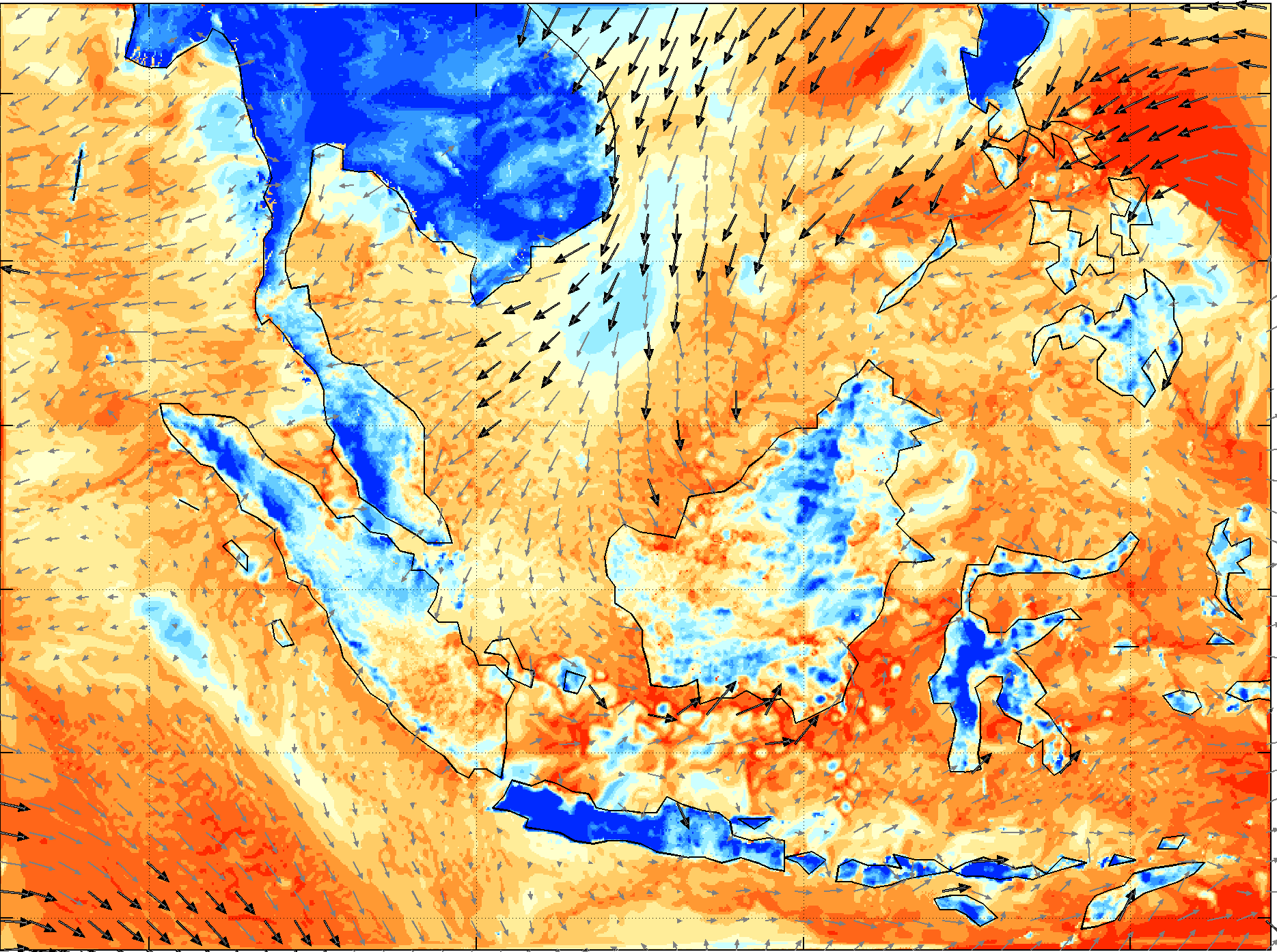WHOI OCCI: A Regional Coupled Model with Explicit Convection: Diurnal Rainfall and Air-Sea-Land Interaction in the Maritime Continent (2015-2017)
This study examines the diurnal atmospheric convection and air-sea interaction in the Maritime Continent (MC, or the Indonesian Archipelago) using a high-resolution regional ocean-atmosphere model with explicit convection. The long-term goal is to assess the effect of MC processes on the simulation and predictability of Madden-Julian Oscillation (MJO) – the dominant intraseasonal (30-90 days) convective variability in the earth’s atmosphere.
MC supports one of the strongest equatorial deep convection centers over the Indo-Pacific Warm Pool, where this deep convective activity is strongly modulated by the intraseasonal eastward propagating MJO from the Indian Ocean to the West Pacific. The MC is also well-known for its short space-time variability, such as diurnal rainfall and diurnally forced circulation (land-sea breezes and mountain-valley flows). These transient and small-scale atmospheric processes interact with the shallow seas in the MC to determine the region’s intraseasonal rainfall variability. The fine-scale processes in the MCs are not well resolved in numerical weather prediction (NWP) and global climate models, which rely heavily on parameterization schemes that are not fully verified due to lack of observations. The simulation models with parameterized convection show that prediction skill drops dramatically as the MJO traverses the MC, often referred to as the MJO prediction barrier. Diurnally forced convection over land is the key process to be accurately represented in the numerical models in the first place, since it leads to formation of organized convection over the ocean accompanied by heavy rain events. This study assesses whether the simulation of diurnal convection and rainfall, and air-sea interaction can be improved by explicitly resolving deep convection in the MC without using the parameterization scheme at very high-resolution, and if this improvement represents a significant influencing factor for the MJO propagation.
Currently, strong scientific interests and international collaborations are emerging toward coordinated multi-year field experiments in the MC. Process-oriented modeling and model-data synthesis activity are a key component in this effort, which help not only the observationalists to plan the experiments and interpret the results, but also the modelers to improve the parameterizations and the prediction models. I expect that my initial technical modeling result will help facilitate my participation more strongly in community activities. With the unique and credible regional coupled model at hand, I will actively collaborate with observationalists with expertise in the moist convective process and the MJO modelers at the major forecasting centers to develop major collaborative proposals with the overall aim to improve understanding and simulation of both the MC process and the MJO.
Award: $54,918, Duration: 2015-2016
Funded by WHOI Ocean and Climate Change Institute
